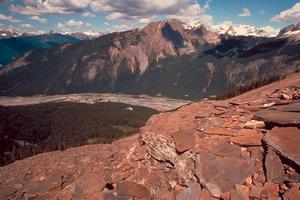Fossil
Fossil [Lat fossilis, "dug up"], trace of an ancient animal or plant preserved in the Earth's crust. Palaeontology is the modern, scientific study of fossils, but these curious objects have attracted attention since ancient times. Opinions were divided as to whether they were relics of once-living creatures, or were random results of processes without any particular significance. A few original thinkers deduced that not only were they products of ancient life but that they also recorded the former distribution of land and sea. The Greek scholar Herodotus concluded that the presence of marine shells in the interior of Egypt demonstrated that the area had been inundated in former times. In the 16th century, Leonardo da Vinci not only accepted fossils as relics of former life but also argued, from their presence high in the mountains, that there had been profound changes in the level of the sea. Glimpses of the true meaning of fossils were offered by the 17th-century English physicist Robert Hooke, who suggested that fossils recorded changes in climate and succession of life.
The great breakthrough that established fossils as the chroniclers of geological history was made independently, early in the 19th century, by William Smith in England and Georges Cuvier and Alexandre Brongniart in France. They discovered that a distinct succession of fossils exists in stratified layers of sedimentary rocks. They also noted that while deposits of the same age carry the same kinds of fossils, rocks of different ages carry different fossils. Study of the succession of fossils in rock layers (biostratigraphy) provides a basis for establishing a history of the Earth. By 1842, the broad divisions of geological time had been defined for Europe and for North America, and much detail had been worked out on local sequences of rock formations and their fossil contents.

 Share on Facebook
Share on Facebook Share on X
Share on X Share by Email
Share by Email Share on Google Classroom
Share on Google Classroom




